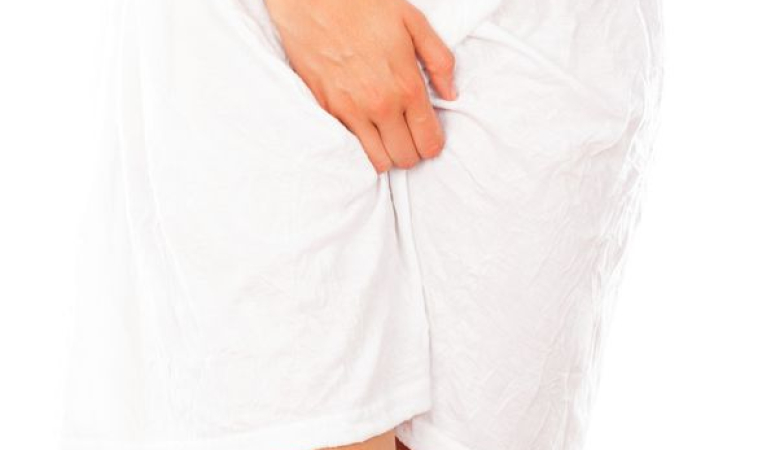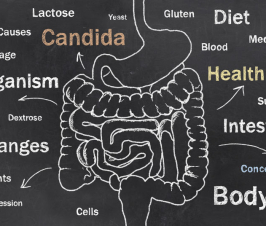Vaginal yeast infections are annoying and uncomfortable. When vaginal yeast infections become chronic, 4 or more infections in 12 months, it can become almost unbearable and can begin to affect daily life.1 Common symptoms of vaginal Candida yeast infections include vaginal pain, discharge, itching and burning.
Finding the Cause
First it must determined if the source of a recurrent vaginal infection is truly due to Candida yeast. Bacteria and other irritants can be the source of vaginal inflammation and discharge and should be ruled out accordingly as only 33% of vaginal infections are due to Candida yeast. Candida albicans is the most common yeast to infect the vagina.2
The vaginal canal is an ecosystem of bacteria. The majority of bacteria living in the vagina are of the Lactobacillus species. The vagina, being mostly inhabited with lactic acid producing lactobacillus, is a relatively acidic environment with a normal pH of around 3.8-4.5. When lactobacillus numbers decrease, the vaginal environment becomes less acidic and invites opportunistic bacteria and yeast to thrive. A low vaginal pH also assists in the ability for antifungal medications to treat Candida yeast infections.3This makes lactobacillus supplementation a consideration as an adjunctive therapy.
Personal Care
Hygiene practices like douching, pre or postmenopausal status and blood sugar management also play their part in susceptibility of a vaginal infection and in turn influences the ability of lactobacillus bacteria to survive in the vagina.4
The practice of vaginal douching has arguments both for and against its use. Studies show douching with plain water or solutions that elevate the vaginal pH tend to increase the risk of vaginitis. However, solutions with low pH or acidic solutions, offered some protection from vaginitis and were used as treatment. It does seem the overuse of vaginal douching as a cleansing practice does alter the vaginal bacterial ecosystem and should likely be reserved only for treatment purposes.5
Other Risk Factors
Depending on pre or post menopause status the types and amount Lactobacillus can vary.6 Changes in estrogen levels are linked to alterations of Lactobacillus in the vagina.7Postmenopausal decreases in estrogen reduces the quantity of lactobacilli in the vagina, which has been speculated a contributing factor in the rise of urogenital infections in this population of women. Conversely, estrogen elevations during menses, increases the adherence of lactobacillus in the vaginal canal and may offer protection from urogenital infections, including vaginal yeast infections.8Maintaining appropriate estrogen levels pre and postmenopause show promise in improving lactobacillus levels in the vagina, therefore better protection from infections.
Diabetic women are at a greater likelihood of developing Candida vaginitis. Studies show a link between mean fasting blood sugar levels and the risk of chronic vaginal Candida. 9
Direct insertion of lactobacillus in the vagina was found to be advantageous to temporarily increase the number and variety of strains of lactobacillus in the vagina, assisting in reducing pathogenic bacteria adherence and creating a pH conducive to allowing lactobacillus to reestablish and thrive.10Adherence quality of lactobacillus depends on the strain, dose amount and route of administration in addition to vaginal pH.11Oral dosing of lactobacillus in doses as little as one billion organisms per day was successful to sustain a lactobacillus dominated vaginal presence.12
While the use of lactobacillus alone does may not be enough to overcome a Candida yeast infection, it certainly offers support as adjunctive therapy. This, in conjunction with balancing hormones, maintaining healthy blood sugar and modulating hygiene practices are all ways to address the root cause of reoccurring Candida vaginitis.
 Dr. Ashley Burkman received her Doctor of Naturopathic Medicine degree from the National University of Health Sciences in Chicago. She is deeply rooted in classical naturopathic medicine, practicing the belief that the human body has an innate ability to heal itself. She works with patients toward lifestyle adjustments in order to bring about long-term health. Viewing the body as an integrated whole and addressing all aspects of what determines health is the cornerstone of both naturopathic medicine and Dr. Burkman’s practice.
Dr. Ashley Burkman received her Doctor of Naturopathic Medicine degree from the National University of Health Sciences in Chicago. She is deeply rooted in classical naturopathic medicine, practicing the belief that the human body has an innate ability to heal itself. She works with patients toward lifestyle adjustments in order to bring about long-term health. Viewing the body as an integrated whole and addressing all aspects of what determines health is the cornerstone of both naturopathic medicine and Dr. Burkman’s practice.
Dr. Ashley Burkman is a licensed naturopathic physician in the state of Connecticut. Commitment to the growth of her profession has lead her to participate in the several campaigns to expand the scope of practice of naturopathic physicians in several states. She is also a member of both the Connecticut Naturopathic Association and American Association of Naturopathic Physicians.
Dr. Burkman, an Iowa native, enjoys perusing local farmers markets, spending time with friends and family, and searching for new hiking trails to conquer. She attends comedy shows and baseball games regularly and has a soft spot for cats.
Dr. Burkman and Dr. Lauren Young practice as fully licensed Naturopathic Physicians at Connecticut Natural Health Specialists, LLC, in Manchester, CT. Most major health insurances accepted. New patients are encouraged to call for an appointment.
References:
- Watson, C, Calabretto, H. Comprehensive review of conventional and non-conventional methods of management of recurrent vulvovaginal candidiasis. National Center for Biotechnology Information. 2007. Available at: http://www.ncbi.nlm.nih.gov/pubmed/17627679. Accessed April 11, 2015.
- Hudson, T. Women’s encyclopedia of natural medicine: alternative therapies and integrative medicine for total health and wellness. New York: McGraw-Hill; 2008.
- Liu, W, Zhang, X, Liu, Z, Luo, X. Impact of pH on the antifungal susceptibility of vaginal Candida albicans. International Journal of Gynecology & Obstetrics. 2011;114(3):278-280. doi:10.1016/j.ijgo.2011.03.016.
- Reid, G. Probiotic agents to protect the urogenital tract against infection. National Center for Biotechnology Information. 2001. Available at: http://www.ncbi.nlm.nih.gov/pubmed/11157354/. Accessed April 15, 2015.
- Martino, JL. Vaginal Douching: Evidence for Risks or Benefits to Women’s Health. Epidemiologic Reviews. 2002;24(2):109-124. doi:10.1093/epirev/mxf004.
- Zhou, X, Brown, C, Adbo, G. Differences in the composition of vaginal microbial communities found in healthy Caucasian and black women. National Center for Biotechnology Information. 2007. Available at: http://www.ncbi.nlm.nih.gov/pubmed/18043622. Accessed April 15, 2015.
- Galask, R. Vaginal colonization by bacteria and yeast. National Center for Biotechnology Information. 1988. Available at: http://www.ncbi.nlm.nih.gov/pubmed/3284368/. Accessed April 15, 2015.
- Chan, R, Bruce, A, Reid, G. Adherence of cervical, vaginal and distal urethral normal microbial flora to human uroepithelial cells and the inhibition of adherence of gram-negative uropathogens by competitive exclusion. National Center for Biotechnology Information. 1984. Available at: http://www.ncbi.nlm.nih.gov/pubmed/6422061/. Accessed April 15, 2015.
- Malazy, OT, Shariat, M, Heshmat, R, et al. Vulvovaginal Candidiasis and its Related Factors in Diabetic Women. Taiwanese Journal of Obstetrics and Gynecology. 2007;46(4):399-404. doi:10.1016/S1028-4559(08)60010-8.
- Cribby, S, Taylor, M, Reid, G. Vaginal Microbiota and the Use of Probiotics. Interdisciplinary Perspectives on Infectious Diseases. 2009. Available at: http://www.ncbi.nlm.nih.gov/pmc/articles/pmc2662373/. Accessed April 14, 2015.
- Falagas , M, Betsi, G, Tokas, T, Athanasiou , S. Probiotics for prevention of recurrent urinary tract infections in women: a review of the evidence from microbiological and clinical studies. National Center for Biotechnology Information. 2006. Available at: http://www.ncbi.nlm.nih.gov/pubmed/16827601. Accessed April 15, 2015.
- Reid G, Beuerman D, Heinemann C, Bruce AW. Probiotic Lactobacillus dose required to restore and maintain a normal vaginal flora. FEMS Immunology & Medical Microbiology. 2001;32(1):37–41.
















